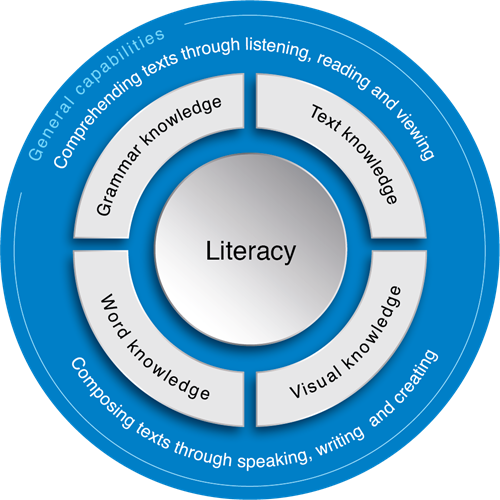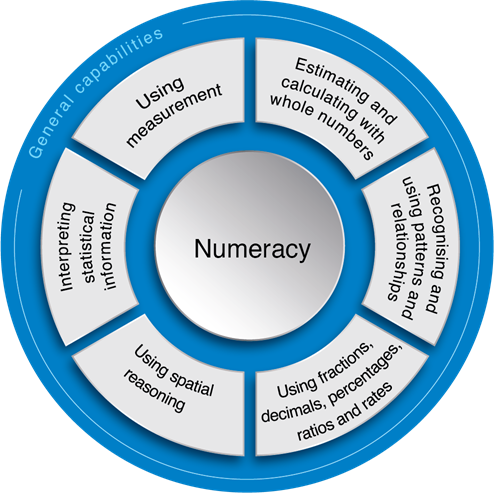Literacy
 Literacy is more than just reading and
writing. It means that our students have the ability and confidence to
comprehend and communicate in everyday life. This involves reading, viewing,
listening, writing, speaking and creating. We believe that literacy is a life
skill.
Literacy is more than just reading and
writing. It means that our students have the ability and confidence to
comprehend and communicate in everyday life. This involves reading, viewing,
listening, writing, speaking and creating. We believe that literacy is a life
skill.
At
Bowen State High School, our students’ literacy skills are supported across all
curriculum areas. Students are able to recognise their own capabilities, and
have multiple opportunities to improve their own skills.
The teaching of literacy
The
explicit teaching of literacy is a key priority for staff at Bowen State High
School.
Our
teachers teach the reading and writing demands of the curriculum through:
- Having a clear focus on a text
- Having clear input and output phases
- Using a gradual release of responsibility of the thinking required
- Using think-alouds to model thinking, and encouraging students to share their thinking
- Incorporating appropriate strategies to support each student (Tactical Teaching of Reading and Writing, The Writing Revolution, Visible Literacy)
- Teaching to the A standard
- Utilising classroom artefacts
- Working with students to check their work against the success criteria of the lesson
Literacy continuum
 The P–10 Literacy continuum is
informed by international and Australian research on literacy. It is a tool for
all teachers to use flexibly to track and monitor student literacy progress,
strengthen literacy in all learning areas/subjects, communicate clear learning
goals with students to make literacy learning in the curriculum more visible,
and determine ‘where to next’ when planning teaching for whole classes, groups
of learners and individual students and to assist when differentiating units of
work.
The P–10 Literacy continuum is
informed by international and Australian research on literacy. It is a tool for
all teachers to use flexibly to track and monitor student literacy progress,
strengthen literacy in all learning areas/subjects, communicate clear learning
goals with students to make literacy learning in the curriculum more visible,
and determine ‘where to next’ when planning teaching for whole classes, groups
of learners and individual students and to assist when differentiating units of
work.
The continuum supports teachers in:
- further developing literacy expertise in the curriculum
- providing feedback to students about their literacy progress in the curriculum
- expanding opportunities for all students to reach their potential in the curriculum and providing learning experiences that further develop literacy expertise across the curriculum.
At our school, teachers can use this
tool to track and monitor students’ progress across five different literacy
aspects – reading, comprehension, vocabulary, writing and speaking.
Literacy strategies
Our
teachers draw on a range of research-based strategies to assist in the explicit
teaching of literacy. These are Tactical
Teaching of Reading and Writing, The
Writing Revolution and Making Literacy
Learning Visible.
Numeracy
 Being
numerate goes beyond simply ‘doing sums’. It means that our students have the
ability and confidence to use the number system, think mathematically and
problem solve in everyday life. This involves estimating, understanding
finances, making decisions and identifying possibilities. We believe that
numeracy is a life skill.
Being
numerate goes beyond simply ‘doing sums’. It means that our students have the
ability and confidence to use the number system, think mathematically and
problem solve in everyday life. This involves estimating, understanding
finances, making decisions and identifying possibilities. We believe that
numeracy is a life skill.
Australian
Curriculum, Assessment and Reporting Authority. (2019). Organising elements for
numeracy [Image]. Retrieved from Australian Curriculum.
At
Bowen State High School, our students’ numeracy skills are supported across all
curriculum areas. Students are able to recognise the many applications of
numeracy skills, and have multiple opportunities to improve their own skills.
Reading
and numeracy intervention programs
At Bowen State High School, we have two intervention programs designed to foster and develop students' reading and numeracy skills. Students are selected for these programs through their results from a range of assessments including formative and summative assessment within the learning areas, NAPLAN, diagnostic reading tests such as Burt and Probe tests, QuickSmart testing and PAT tests. Students are also considered for intervention programs through our school-based referral process initiated by classroom teachers.
QuickSmart – numeracy
intervention program
QuickSmart
is a theory-based educational intervention for middle-school students,
specifically, for those in Years 5, 6, 7 and 8. It was designed to enhance
students' fluency in numeracy by improving their information retrieval times.
Individually designed intervention programs are developed and implemented as
part of QuickSmart in order to strengthen students' problematic skills.
Key components
- Structured and time-efficient lessons which have a set sequence of activities.
- Motivating and timed practice activities aimed at speedy recall of known facts.
- Individualised instruction, ensured by assessment and instruction forming a continuous purposeful cycle.
- Strategy instruction is ongoing, explicit and individually tailored to students' needs.
- Opportunities for students to self-monitor, and to receive and generate immediate feedback about their performance.
- Instruction that ensures the students experience success by providing regular and predictable learning sequences: students practise and improve on what they already know, and then learn and practise new knowledge during the lesson.
- Content is explicitly linked to current classroom curriculum as well as to real-life settings where possible.
- Reflective, metacognitive questioning and responding are incorporated into lessons - for example, QuickSmart instructors ask questions such as, "How did you work that out?", "Why are you so sure of your answer?". This focus of instruction can assist students to develop the language to describe their thinking.
- The use of stop watches, hourglass timers, and wall clocks assist students to 'externalise' time. These devices encourage students to become more aware of their sense of time and improve their ability to estimate time.
- Close collaboration with parents, teachers and principals of participating schools. Stakeholders are fully informed about the project and involved in its implementation and evaluation.
- A long term and consistent intervention approach which provides practice opportunities that will bring students 'up to speed' so they can share 'the fast track' with their peers.
Right Track – reading
intervention program
Right Track involves a variety of multisensory activities specifically designed to target the development of the essential reading skills required to to establish correct phonologic processing. Carefully targeted activities integrate visual, kinetic, oral and auditory processes to help the child or student master proficient reading.
This program develops proficient phonologic processing by directly and systematically building necessary skills such as:
- Phonemic awareness
- Knowledge of the complete phonemic code
- Smooth blending
- Proper directional tracking
- Attention to detail
- Integrating and applying fundamental skills to intentionally develop proficient print-to-sound phonologic processing
It also extends beyond basic phonologic decoding, providing tools to help students develop higher level skills such as:
- Handling multisyllable words
- Building fluency
- Developing reading comprehension
- Expanding vocabulary